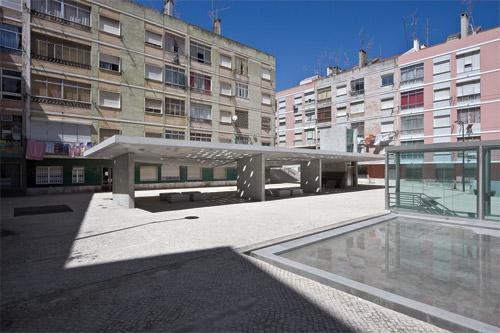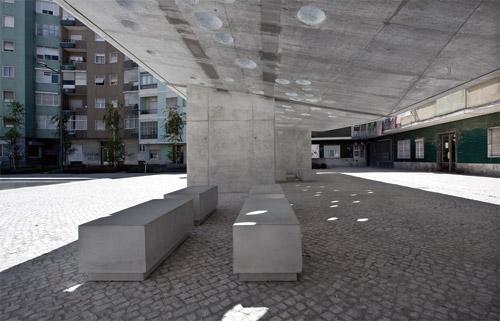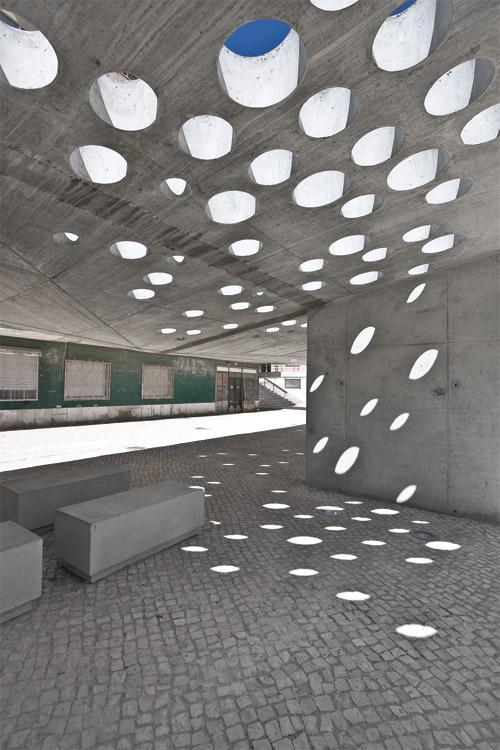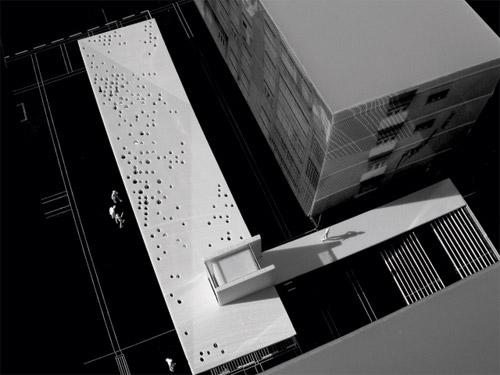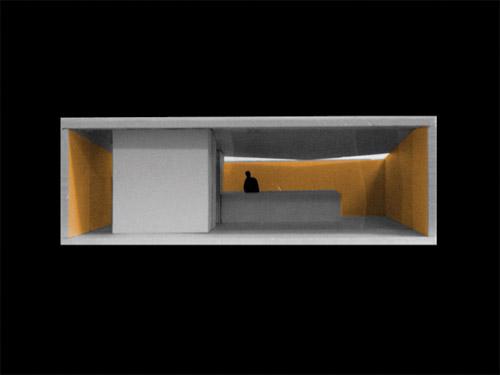Coffee Shop and Shading Surface
Coffee Shop and Shading Surface
«Sustainable Practices» is the theme of the last issue of arq|a #78/79 magazine. It is relevant to understand that sustainability has revived in recent years the emancipatory dimension of modern architecture, bringing again the architect to the centre of operations. This also marks the shift from a mere technical and technological to a more social and cultural approach to the issue of sustainability. In this sense, sustainable practices include not only the use of traditional and new materials and techniques or the adoption of low-tech and high-tech approaches, but also a consideration of its effective impact on reality and even on society as a whole. So the rethinking of the urban condition in a global world cannot escape the current issues of renewable energies, reuse and recycling of resources, social appropriation of the built environment, or even urban agriculture.
In this changing architectural context, the chirurgical interventions in the public space of an extensive housing periphery of Lisbon, made by the young Portuguese practice Ateliermob, acquires a strong meaning. In their words, "this project assumes a particular relevance to our firm, for being the first built public space designed by ateliermob." In fact, the rehabilitation of this disqualified vast housing zones, where the great majority of the population that uses the city of Lisbon lives, is a crucial task to a sustainable future of the metropolitan area. In a sense, there is no sustainability in the cities without social cohesion and collective appropriation of their public spaces. This project is a small but relevant step in that direction. The most interesting aspect of this intervention is the strategy that was adopted. Countering the abstract and totalizing practices of planning, this series of small interventions shows a more contextual and specific approach, showing that little projects and limited budgets can make a difference in disqualified urban areas.
The project of Ateliermob proposes to characterize the existing neutral public spaces with small objects with programmatic content. In their own words, "Ateliermob was called to take part in this urban plan, designing three interventions with the common goal of playing a decisive role in the qualification of public spaces in between buildings, formerly abandoned, disqualified and full of cars.
(...). These three interventions, with objective and circumscribed problems, should contribute to simplify the complexity of the urban environment and, above all, reduce the impact of the turbulent context. Therefore, we sought to design three quiet buildings, under the motto: «nothing new under the sun»." They propose three small buildings, a Shading Surface, a Coffee Shop and a Tobacco Shop, but only the first two were effectively built. The individual objects then redefine the design of the surrounding public space, with rest and play areas and user and children friendly environments. Instead of being the usual indefinite negative of the existing built volumes, the design of these small objects and adjacent public areas gives an identity to the collective spaces. A tranquil and serene identity, nonetheless.
To give cohesion to the project, Ateliermob has developed a similar design strategy for the individual objects, adapting it to the specific programmatic needs of each intervention: "The design process started from the idea of having the fifth facade as the reference element of the three interventions. The faceted surface could adapt itself to the different topographies of the projected landscape reinforcing the common identity of the buildings."
Firstly, the Shading Surface assumes a clear referential value in the existing square, assuming the rawness of the in situ concrete and exploring the lightness of its linear and slightly folded and heavily perforated horizontal shape. This affirmative floating plane not only gives protection from the elements and connects, with a lift, the different ground levels, but also acquires a subtle and surprising poetic dimension, reminiscent of the organic shades of the trees. In the words of the architects, "The three slope plans structured on five walls, are dematerialized by one regular process of pixelization. The holes produced a very iconic image to the square (important in one environment with lack of references) and play one interesting game of light under it." Secondly, the Coffee Shop, with the same structure of the unbuilt Tobacco Shop, is a small building that adapts itself to the topography, giving a new order to the interstitial space between the two long, parallel housing blocks. The building is almost buried in the ground with generous stairs in both lateral elevations, permitting the opening of the interior spaces to the public space in front. The roof of the Coffee Shop is again slightly folded with a linear zenithal light that illuminates the back wall intentionally covered with bright coloured tiles, "which changes a lot the interior ambiance according to the daylight and time of the year."
The project of Ateliermob, being relatively modest in size, is very significant in consequence. It is a rare project in the Portuguese architectonic panorama. In a country where the phenomenon of the periphery in the second half of last century has exploded and expanded the cities, it still remains to be done an effective rethinking and structured intervention in these vast disqualified urban areas in the outskirts of the main Portuguese cities. It is in this ambit that this project could provide some clues. Despite its irrelevant scale compared with the scope of what needs to be done, it points affirmatively to a direction. And that direction is that a series of small intentional and creative interventions in the now neutral and expecting public spaces can really infuse new life in our urban peripheries. These projects can be the support for a reanimated collective living. In its humble objectives they carry the seeds of a desired emancipation. Maybe the periphery, as an open territory of possibility in contrast to the closeness of the city centres, can incorporate the promises of tomorrow.
Text by Luís Santiago Baptista
Coffee Shop and Shading Surface
2009
Sacavém
Lisbon
Architecture
Ateliermob
Lisbon
Construction
Tiago Mota Saraiva
Nuno Carvalho
Andreia Salavessa
Raquel Capelo
Carolina Condeço
Nuno Ferreira
Vera João
Project
Tiago Mota Saraiva
Nuno Carvalho
João Ribeiro
João Ferrão
Sónia Oliveira
Structure Engineering
Pereira Pinto
Sanitary Planning
Grade Ribeiro
Electrical and Telecommunications
Security Planning
Campos Carvalho
Contractor
Câmara Municipal de Loures
Plan coordination
CM-Loures
Construction . Alfaro Martins
Project . Ana Lúcia Abreu
Constructor
Abrantina - Grupo Lena
Construction Supervision
TPF Planege

